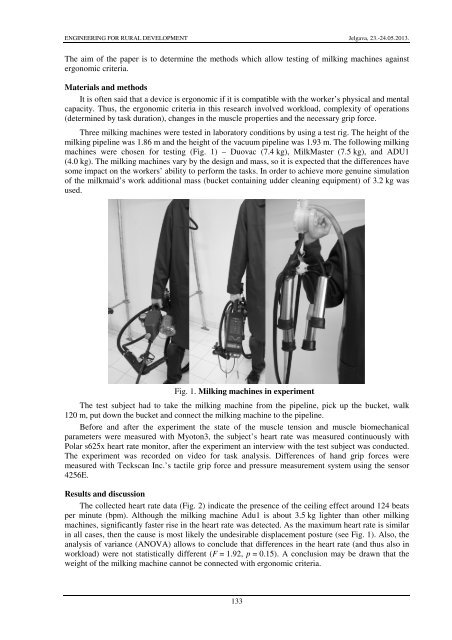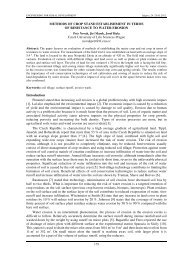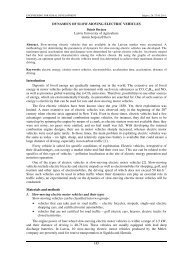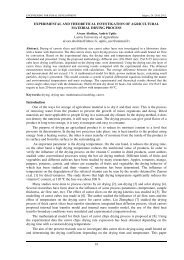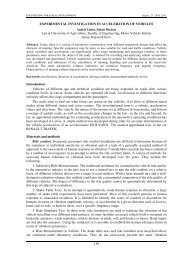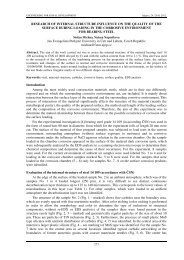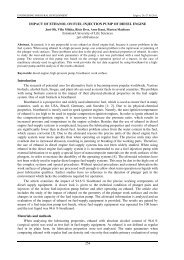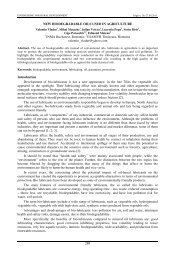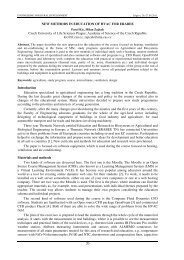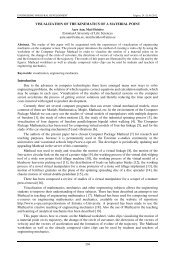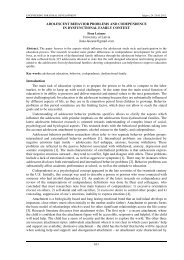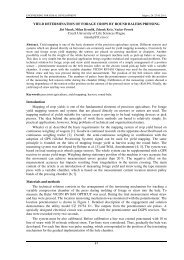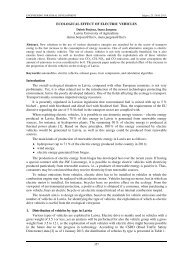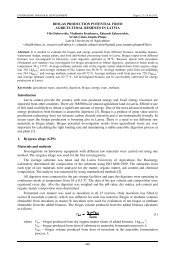Arvo Leola, Mart Reinvee, Matis Luik, Regina Lensment, Taavi ...
Arvo Leola, Mart Reinvee, Matis Luik, Regina Lensment, Taavi ...
Arvo Leola, Mart Reinvee, Matis Luik, Regina Lensment, Taavi ...
Create successful ePaper yourself
Turn your PDF publications into a flip-book with our unique Google optimized e-Paper software.
ENGINEERING FOR RURAL DEVELOPMENT Jelgava, 23.-24.05.2013.<br />
The aim of the paper is to determine the methods which allow testing of milking machines against<br />
ergonomic criteria.<br />
Materials and methods<br />
It is often said that a device is ergonomic if it is compatible with the worker’s physical and mental<br />
capacity. Thus, the ergonomic criteria in this research involved workload, complexity of operations<br />
(determined by task duration), changes in the muscle properties and the necessary grip force.<br />
Three milking machines were tested in laboratory conditions by using a test rig. The height of the<br />
milking pipeline was 1.86 m and the height of the vacuum pipeline was 1.93 m. The following milking<br />
machines were chosen for testing (Fig. 1) – Duovac (7.4 kg), MilkMaster (7.5 kg), and ADU1<br />
(4.0 kg). The milking machines vary by the design and mass, so it is expected that the differences have<br />
some impact on the workers’ ability to perform the tasks. In order to achieve more genuine simulation<br />
of the milkmaid’s work additional mass (bucket containing udder cleaning equipment) of 3.2 kg was<br />
used.<br />
Fig. 1. Milking machines in experiment<br />
The test subject had to take the milking machine from the pipeline, pick up the bucket, walk<br />
120 m, put down the bucket and connect the milking machine to the pipeline.<br />
Before and after the experiment the state of the muscle tension and muscle biomechanical<br />
parameters were measured with Myoton3, the subject’s heart rate was measured continuously with<br />
Polar s625x heart rate monitor, after the experiment an interview with the test subject was conducted.<br />
The experiment was recorded on video for task analysis. Differences of hand grip forces were<br />
measured with Teckscan Inc.’s tactile grip force and pressure measurement system using the sensor<br />
4256E.<br />
Results and discussion<br />
The collected heart rate data (Fig. 2) indicate the presence of the ceiling effect around 124 beats<br />
per minute (bpm). Although the milking machine Adu1 is about 3.5 kg lighter than other milking<br />
machines, significantly faster rise in the heart rate was detected. As the maximum heart rate is similar<br />
in all cases, then the cause is most likely the undesirable displacement posture (see Fig. 1). Also, the<br />
analysis of variance (ANOVA) allows to conclude that differences in the heart rate (and thus also in<br />
workload) were not statistically different (F = 1.92, p = 0.15). A conclusion may be drawn that the<br />
weight of the milking machine cannot be connected with ergonomic criteria.<br />
133


